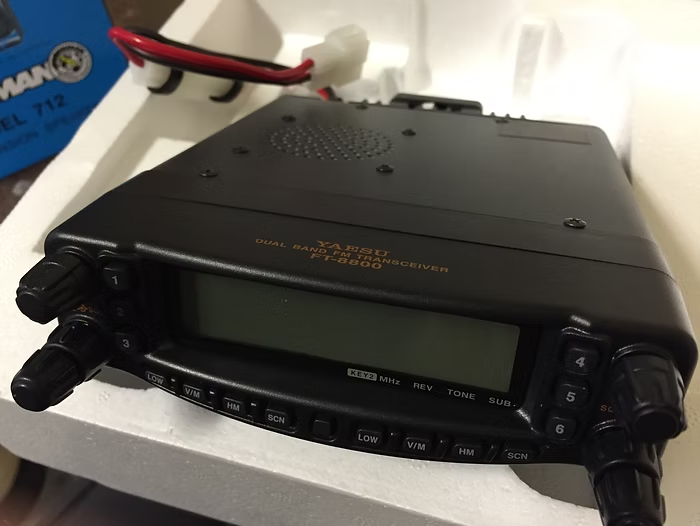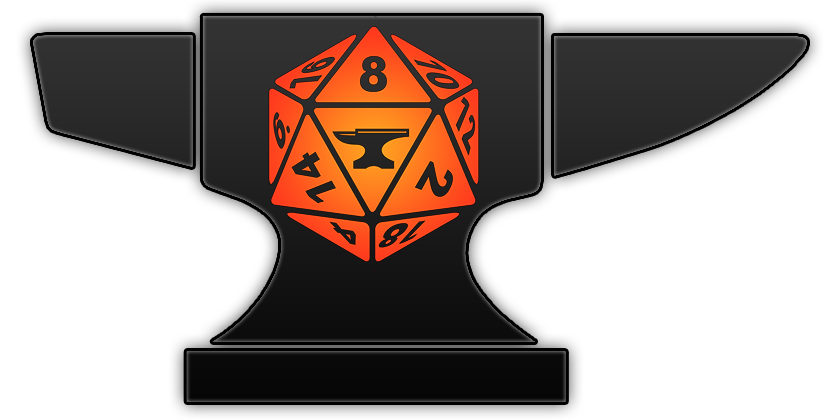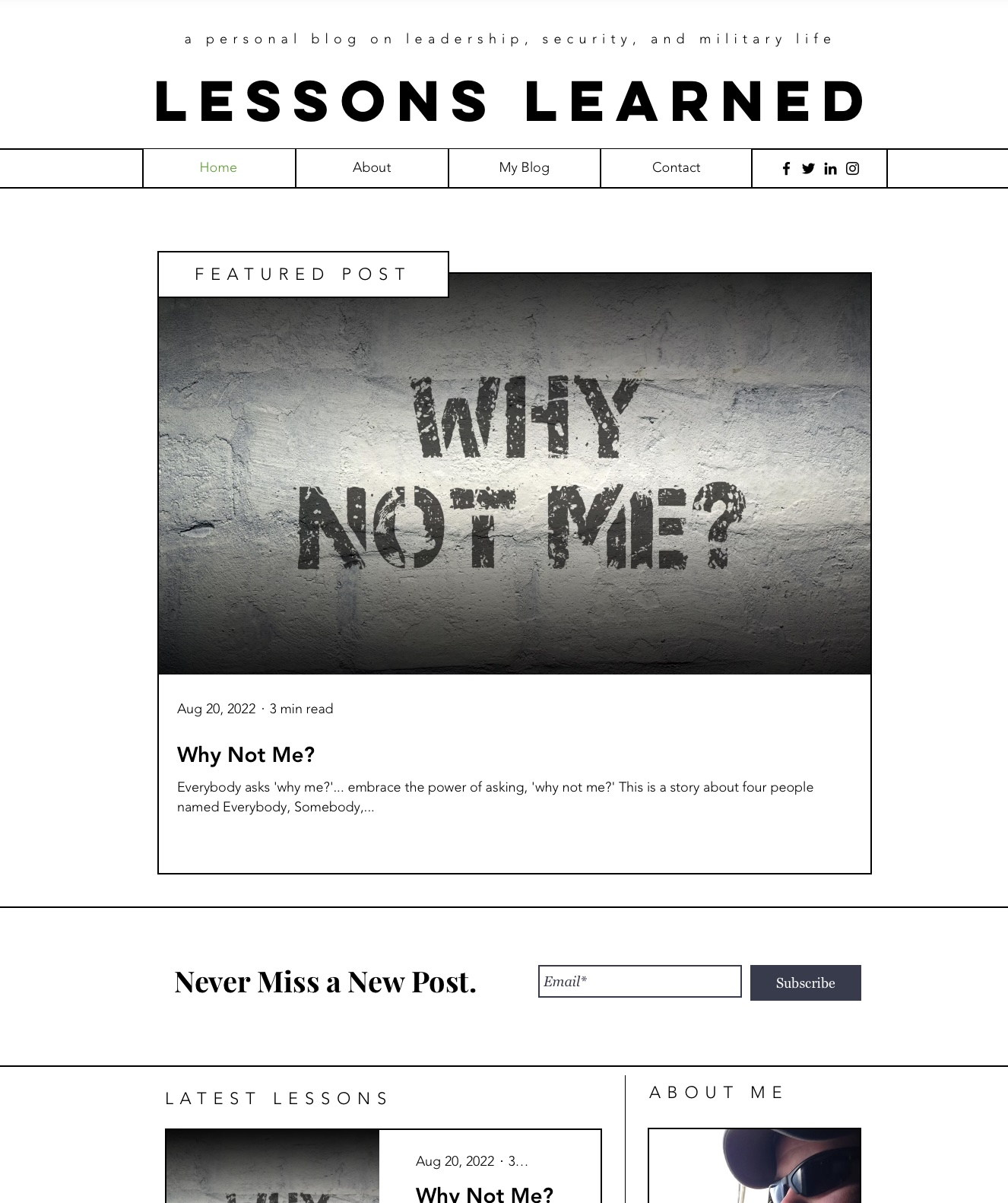More adventures in installing radio gear on an unlikely platform
Why does the MINI need another radio? Because there’s no such thing as too many radios. As I mentioned in my previous posts last May, I installed the CB radio partially to explore just how relatively difficult it would be to install a more-expensive 2m/70cm ham radio. I was pleasantly-surprised at how smoothly the installation went and it gave me a lot of confidence going into this project. Like any project, an ounce of planning saves a gallon of blood, so I started with research.
The Shopping List
Just like before, I started by identifying the needs of my mobile station as below:
1. Antenna
2. Antenna mount
3. Antenna cabling
4. Radio
5. Power cabling
6. Miscellany
As before, I started with the most important part of a radio system: the antenna. I went with a nice Larsen NMO (New Motorola) mount 2m/70cm dual band antenna. Normally multiband antennas are either pure marketing lies, receive-only log-periodic arrays, or exotic as hell, but these two frequency bands are convenient harmonics of each other. The center of the 2m band is at approximately 150MHz while the center of the 70cm band is approximately 450MHz. Thus, my 1/4-wave 2m antenna is functionally a full-wave 70cm antenna. Larsen is a reputable brand commonly used by law enforcement and while it comes pre-tuned, it’s designed to be easily trimmed down to size if needed.
The mount came easily. I have been pretty happy with the Comet Trunk Lip Antenna Mount for my CB; all I needed to do was add another to the other side of the MINI’s hatch. As with the other Comet mount, it includes more than enough RF cabling without needing to build any additional cable. The power cabling was as easy as soldering an additional cable into the circuit I built for the CB. Not exactly a pretty box

For the radio itself, I went with Yaesu’s FT-8800. It’s a relatively-inexpensive 2m/70cm radio that allows for cross-band repeater work and supports monitoring two frequencies simultaneously. It lacks some of the gee-whiz features and additional bands of some of the newer models, but it does exactly what I want it to. One particularly nice feature is the ability to separate the faceplate from the main radio body. This makes finding a mounting location a far simpler and more flexible affair.
The last bit of miscellany was an external speaker, which I just shoved under my seat. It wasn’t going anywhere from there. This location works really well, because I can still hear everything fine, but it’s distinct from the regular car audio. This lets me stuff the radio body in the trunk and keep the installation pretty clean.
The Installation
Most of this went similarly to my experience installing the CB; the relatively-short antenna just sits on the opposite side of the hatch. Where it gets a little different is mounting the radio body itself, mounting the faceplate, and finding a spot for the external speaker.
The first thing I did was test-lay all of the cabling around the cabin to ensure that I had enough slack to mount everything where I wanted and didn’t need to build any additional patch cables or reconsider my life choices. Once I felt confident, I started bravely ripping up interior panels and running cables. I started by throwing the main radio body in the trunk behind the carpeting.
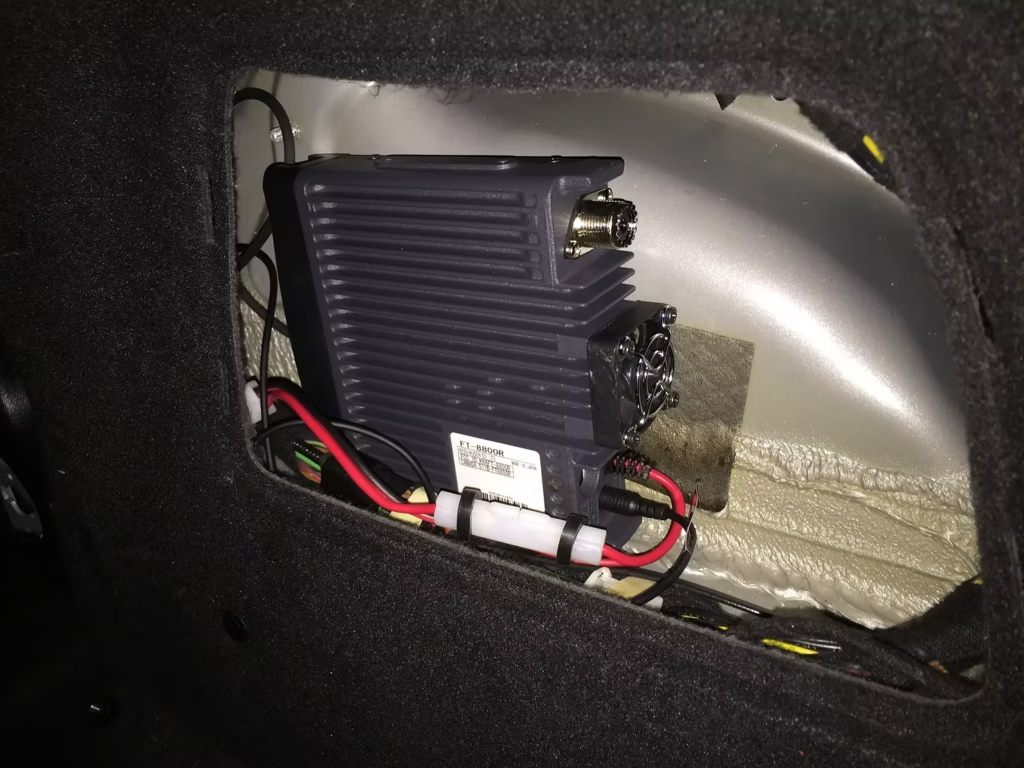
It nestled perfectly back there with some already-run cabling. Long-term, I need to drill into the metal and install a proper bracket. From the radio body, I ran cables for the faceplate, power, and audio along the passenger-side of the MINI. Next, I needed to mount the faceplate. After testing a whole bunch of different areas out of comfort and accessibility, I found a spot on the center console between the shifter and the parking brake that worked just about perfectly. Time to bring out the long screws and the Dremel!
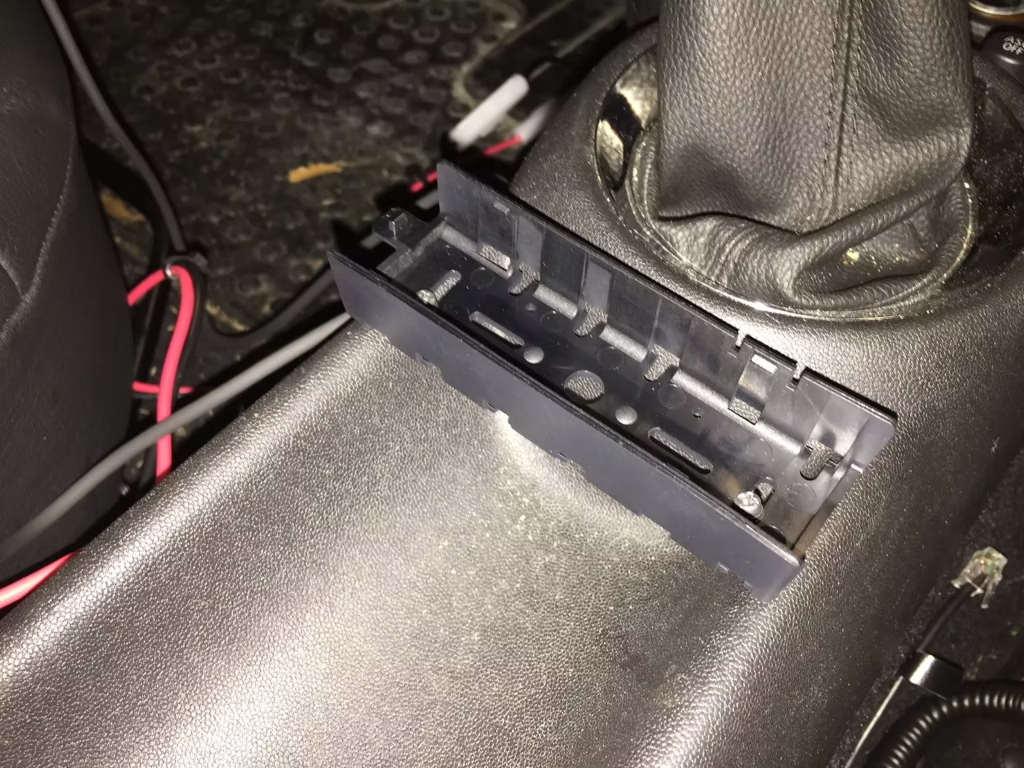

Final Thoughts
Thanks to the experience I gained through the comparatively difficult install of the CB, this was a snap. Arguably, the toughest part was splicing together a homemade Y cable for power. I was done and happily transmitting by the end of the evening and the faceplate’s location makes mobile operation by touch very intuitive. I’ve now got all of the local area repeaters and sub-bands programmed into various scan banks and the whole setup has been fantastic!

